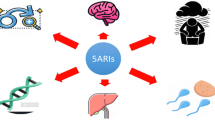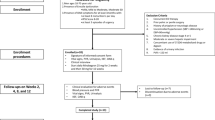Abstract
Benign prostatic hyperplasia (BPH) is a common problem among older men, which is characterized by an enlarged prostate, lower urinary tract symptoms, and decreased flow of urine. It is a progressive disease that can lead to complications such as acute urinary retention (AUR) or a need for BPH-related surgery in some men. Dihydrotestosterone is the primary androgen involved in both normal and abnormal prostate growth and 5α-reductase inhibitors (5ARIs) inhibit the conversion of testosterone to dihydrotestosterone. There are two 5ARIs licensed for the treatment of BPH; dutasteride, which inhibits both type 1 and type 2 isoenzymes of 5α reductase, and finasteride, which inhibits the type 2 isoenzyme. Both 5ARIs have been shown to decrease prostate volume, improve urinary flow and lower urinary tract symptoms and reduce the risk of AUR and BPH-related surgery. The prevention of disease progression, by treating the underlying cause, and the alleviation of symptoms are important aims of BPH therapy. 5ARIs are the only currently available medical therapy that can reduce the risk of AUR and BPH-related surgery while providing long-term symptom control. This provides a mandate for their use in men with enlarged prostates (volume ≥30 ml), who are at increased risk of disease progression.
Key Points
-
Benign prostatic hyperplasia (BPH) is characterized by an enlarged prostate, lower urinary tract symptoms, and a decreased flow of urine
-
BPH is a progressive disease that can lead to complications such as acute urinary retention or a need for surgery to alleviate obstruction
-
The prevention of BPH progression and the alleviation of symptoms are important aims of BPH therapy
-
5α-reductase inhibitors are the only currently available medical therapy that can reduce the risk of acute urinary retention and the need for BPH-related surgery
-
5α-reductase inhibitors are recommended for use in men who are at an increased risk of BPH progression (prostate volume ≥30 ml, PSA level >1.4 ng/ml)
This is a preview of subscription content, access via your institution
Access options
Subscribe to this journal
Receive 12 print issues and online access
$209.00 per year
only $17.42 per issue
Buy this article
- Purchase on Springer Link
- Instant access to full article PDF
Prices may be subject to local taxes which are calculated during checkout

Similar content being viewed by others
References
Girman CJ (1998) Population-based studies of the epidemiology of benign prostatic hyperplasia. Br J Urol 82 (Suppl 1): 34–43
Guess HA et al. (1990) Cumulative prevalence of prostatism matches the autopsy prevalence of benign prostatic hyperplasia. Prostate 17: 241–246
Emberton M et al. (2003) BPH: a progressive disease of aging men. Urology 61: 267–273
Roehrborn CG et al. (1999) Serum prostate-specific antigen concentration is a powerful predictor of acute urinary retention and need for surgery in men with clinical benign prostatic hyperplasia. Urology 5: 473–480
Roehrborn CG et al. (2000) Serum prostate specific antigen is a strong predictor of future prostate growth in men with benign prostatic hyperplasia. PROSCAR long-term efficacy and safety study. J Urol 163: 13–20
Anderson JB et al. (2001) The progression of benign prostatic hyperplasia: examining the evidence and determining the risk. Eur Urol 39: 390–399
Jacobsen SJ et al. (1997) Natural history of prostatism: risk factors for acute urinary retention. J Urol 158: 481–487
Crawford ED et al. (2006) Baseline factors as predictors of clinical progression of benign prostatic hyperplasia in men treated with placebo. J Urol 175: 1422–1426
Sarma AV et al. (2005) A population based study of incidence and treatment of benign prostatic hyperplasia among residents of Olmsted County, Minnesota: 1987 to 1997. J Urol 173: 2048–2053
Vela Navarrete R et al. (2005) The impact of medical therapy on surgery for benign prostatic hyperplasia: a study comparing changes in a decade (1992–2002). BJU Int 96: 1045–1048
Iehle C et al. (1999) Differences in steroid 5alpha-reductase iso-enzymes expression between normal and pathological human prostate tissue. J Steroid Biochem Mol Biol 68: 189–195
Thomas LN et al. (2003) 5alpha-reductase type 1 immunostaining is enhanced in some prostate cancers compared with benign prostatic hyperplasia epithelium. J Urol 170: 2019–2025
Span PN et al. (1999) Selectivity of finasteride as an in vivo inhibitor of 5alpha-reductase isozyme enzymatic activity in the human prostate. J Urol 161: 332–337
Bramson HN et al. (1997) Unique preclinical characteristics of GG745, a potent dual inhibitor of 5AR. J Pharmacol Exp Ther 282: 1496–1502
Tian G et al. (1995) Mechanism of time-dependent inhibition of 5 alpha-reductases by delta 1-4-azasteroids: toward perfection of rates of time-dependent inhibition by using ligand-binding energies. Biochemistry 34: 13453–13459
Frye SV et al. (1998) Discovery and development of GG745, a potent inhibitor of both isozymes of 5 alpha-reductase. Pharm Biotechnol 11: 393–422
Evans HC et al. (2003) Dutasteride. Drugs Aging 20: 905–916
Botto H et al. (2005) Effect of dutasteride on reduction of plasma DHT following finasteride therapy in patients with benign prostatic hyperplasia. Prog Urol 15: 1090–1095
Clark RC et al. (2004) Marked suppression of dihydrotestosterone in men with benign prostatic hyperplasia by dutasteride, a dual 5alpha-reductase inhibitor. J Clin Endocrinol Metab 89: 2179–2184
Roehrborn C et al. (2003) Dutasteride, a novel dual 5-α reductase inhibitor, reduces serum DHT to a greater extent versus finasteride and achieves finasteride maximal reduction in a larger proportion of patients [abstract]. Eur Urol 1 (Suppl): 161
Norman RW et al. (1993) Androgen metabolism in men receiving finasteride before prostatectomy. J Urol 150: 1736–1739
Wurzel R et al. (2006) Inhibition of type I and type II 5alpha-reductase with dutasteride (0.5 mg) significantly reduces intraprostatic dihydrotestosterone in BPH patients. Abstract presented at The Annual Meeting of the American Urological Association: 2006 20–25 May; Atlanta, GA
Marks LS et al. (1999) Long-term effects of finasteride on prostate tissue composition. Urology 53: 574–580
McConnell JD et al. (1998) The effect of finasteride on the risk of acute urinary retention and the need for surgical treatment among men with benign prostatic hyperplasia. N Engl J Med 338: 557–563
McConnell JD et al. (2003) The long-term effect of doxazosin, finasteride, and combination therapy on the clinical progression of benign prostatic hyperplasia. N Engl J Med 349: 2387–2398
Thompson IM et al. (2003) The influence of finasteride on the development of prostate cancer. N Engl J Med 349: 215–224
Roehrborn CG et al. (2002) Efficacy and safety of a dual inhibitor of 5-alpha-reductase types 1 and 2 (dutasteride) in men with benign prostatic hyperplasia. Urology 60: 434–441
Debruyne F et al. (2004) Efficacy and safety of long-term treatment with the dual 5 alpha-reductase inhibitor dutasteride in men with symptomatic benign prostatic hyperplasia. Eur Urol 46: 488–494
Andriole G et al. (2004) Chemoprevention of prostate cancer in men at high risk: rationale and design of the reduction by dutasteride of prostate cancer events (REDUCE) trial. J Urol 172: 1314–1317
Boyle P et al. (1996) Prostate volume predicts outcome of treatment of benign prostatic hyperplasia with finasteride: meta-analysis of randomised clinical trials. Urology 48: 398–405
Kaplan SA et al. (2006) Combination therapy with doxazosin and finasteride for benign prostatic hyperplasia in patients with lower urinary tract symptoms and a baseline total prostate volume of 25 ml or greater. J Urol 175: 217–220
Gittelman M et al. Efficacy of dutasteride as a function of prostate volume in men with BPH. J Urol, in press.
Guess HA et al. (1996) The effect of finasteride on prostate specific antigen: review of available data. J Urol 155: 3–9
Etzioni RD et al. (2005) Long-term effects of finasteride on prostate specific antigen levels: results from the prostate cancer prevention trial. J Urol 174: 877–881
Andriole GL et al. (1998) Treatment with finasteride preserves usefulness of prostate specific antigen in the detection of prostate cancer: results of a randomized, double-blind, placebo-controlled clinical trial. PLESS Study Group. Urology 52: 195–201
Oesterling JE et al. (1998) Biologic variability of prostate specific antigen and its usefulness as a marker for prostate cancer: effects of finasteride. Urology 50: 13–18
Andriole G et al. (2006) Clinical utility of serum prostate specific antigen in the detection of prostate cancer is preserved in men receiving the dual 5alpha-reductase inhibitor dutasteride. J Urol 175: 1657–1662
Thompson IM et al (2006) Comparison of the operating characteristics of PSA for prostate cancer detection for finasteride and placebo in the prostate cancer prevention trial. Abstract presented at The Annual Meeting of the American Urological Association: 2006 20–25 May; Atlanta, GA
Thompson IM et al. (2005) Operating characteristics of prostate-specific antigen in men with an initial PSA level of 3.0 ng/mL or lower. JAMA: 294: 66–70
Schulman C et al. (2006) Long-term therapy with the dual 5alpha-reductase inhibitor dutasteride is well tolerated in men with symptomatic benign prostatic hyperplasia. BJU Int 97: 73–79
Roehrborn CG et al. (2006) Alfuzosin 10 mg once daily prevents overall clinical progression of benign prostatic hyperplasia but not acute urinary retention: results of a 2-year placebo-controlled study. BJU Int 97: 734–741
Lepor H et al. (1996) The efficacy of terazosin, finasteride, or both in benign prostatic hyperplasia. N Engl J Med 335: 533–539
Lepor H et al. (1998) The impact of medical therapy on bother due to symptoms, quality of life and global outcome, and factors predicting response. J Urol 160: 1358–1367
Kirby R et al. (1999) Results of the PREDICT (Prospective European Doxazosin and Combination Therapy) trial. Br J Urol 83 (Suppl 4): 266
Barkin J et al. (2003) Alpha-blocker therapy can be withdrawn in the majority of men following initial combination therapy with the dual 5alpha-reductase inhibitor dutasteride. Eur Urol 44: 461–466
Montorsi F et al. (2006) Racial differences in baseline characteristics in the Combination of Avodart and Tamsulosin (CombAT) trial [abstract]. Eur Urol 5 (2): 196
Baldwin KC et al. (2001) Discontinuation of alpha-blockade after initial treatment with finasteride and doxazosin in men with lower urinary tract symptoms and clinical evidence of benign prostatic hyperplasia. Urology 58: 203–209
Madersbacher S et al. (2004) EAU 2004 guidelines on assessment, therapy and follow-up of men with lower urinary tract symptoms suggestive of benign prostatic obstruction (BPH guidelines). Eur Urol 46: 547–554
AUA Practice Guidelines Committee (2003) AUA guideline on management of benign prostatic hyperplasia. Chapter 1: diagnosis and treatment recommendations. J Urol 170: 530–547
Kawakami J and Nickel JC (1999) Acute urinary retention and surgery for benign prostatic hyperplasia: the patient's perspective. Can J Urol 6: 819–822
Teillac P (2002) Benign prostatic hyperplasia: patients' perception of medical treatment and their expectations: results of a French survey involving patients treated with finasteride. Therapie 57: 473–483
Lucia MS et al. (2005) Pathological assessment of high grade tumors in the prostate cancer prevention trial (PCPT). Abstract #1664 presented at The Annual Meeting of the American Urological Association: 2005 21–24 May; San Antonio, TX
Kulkarni GS et al. (2006) Evidence for a biopsy derived grade artifact among larger prostate glands. J Urol 175: 505–509
Unger JM et al. (2005) Estimated impact of the Prostate Cancer Prevention Trial on population mortality. Cancer 103: 1375–1380
Marberger M et al. (2003) The clinical implications of the prostate cancer prevention trial. BJU Int 92: 667–671
Acknowledgements
Medical writing assistance was provided by HM Williams.
Author information
Authors and Affiliations
Corresponding author
Ethics declarations
Competing interests
The author is a study participant and speaker at symposia (with honorarium) for Merck and GlaxoSmithKline, and a consultant for GP Pharma and R. Wolf.
Rights and permissions
About this article
Cite this article
Marberger, M. Drug Insight: 5α-reductase inhibitors for the treatment of benign prostatic hyperplasia. Nat Rev Urol 3, 495–503 (2006). https://doi.org/10.1038/ncpuro0577
Received:
Accepted:
Issue Date:
DOI: https://doi.org/10.1038/ncpuro0577
This article is cited by
-
Crystal structure of steroid reductase SRD5A reveals conserved steroid reduction mechanism
Nature Communications (2021)
-
In the context of superficially porous silica particles: simultaneous determination of dutasteride and tamsulosin from biological samples
Journal of the Iranian Chemical Society (2020)
-
3D-QSAR CoMFA and CoMSIA studies for design of potent human steroid 5α-reductase inhibitors
Medicinal Chemistry Research (2013)
-
Prostate cancer incidence among finasteride and alpha-blocker users in the Finnish Prostate Cancer Screening Trial
British Journal of Cancer (2009)



